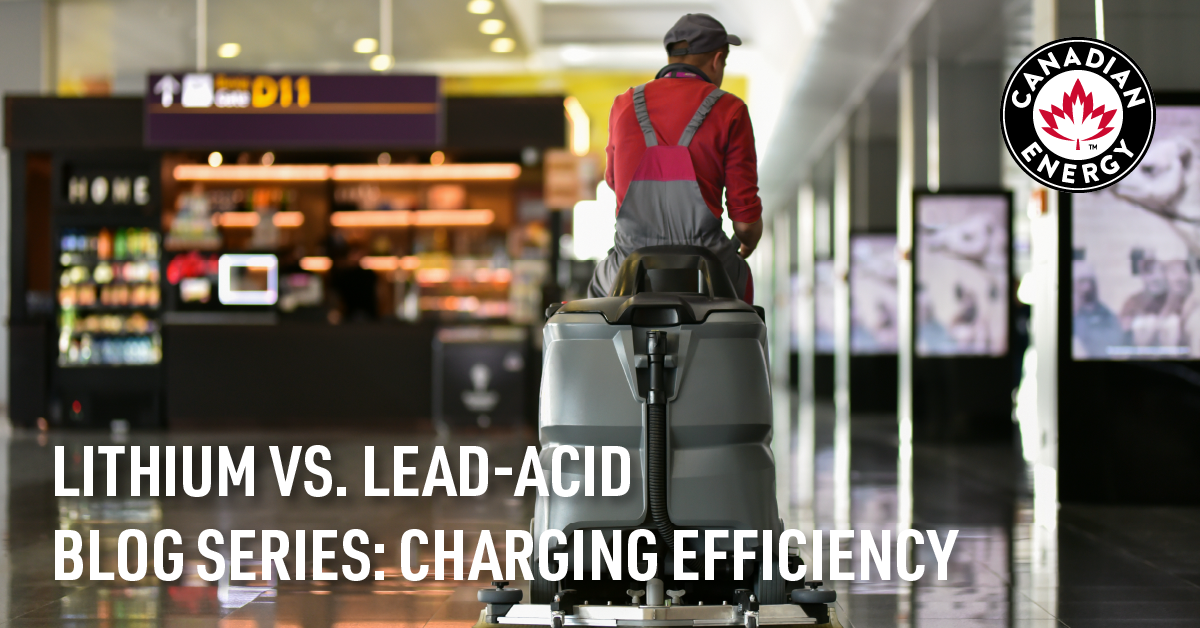Lead vs. Lithium: Charging Efficiency

As discussed in our previous blog post, it is imperative to understand the nuances of the use-case and application when evaluating cycle life requirements and battery of choice for your application. This also applies when looking at the charging efficiency of each battery technology.
Lithium-ion batteries are known for their higher efficiency and fast-charging capabilities, and they shine when paired with charging sources that provide sufficient power output. For you to get the most out of a lithium battery, it is essential to assess the charging infrastructure, charger power and recharge times available. If the charger output isn’t commensurate with lithium-ion’s fast-charging capability, the advantages may be negated.
On the other hand, lead-acid batteries, while offering lower charging efficiency than Lithium, can be cost-effective in scenarios where there’s ample idle time for gradual charging, eliminating the need for a high output charging source. Again, if we use floor scrubbers as an example, we know when deployed in schools, that there is normally ample idle time between cleaning sessions and fast charging isn’t necessarily a high priority. In this application, lead-acid batteries can provide outstanding performance at a much lower cost.
Again, tailoring the charging approach to the specific application requirements ensures optimal efficiency and cost-effectiveness.
Canadian Energy has a team of battery specialists and an extensive range of battery technology available for every application. Visit on of our 19+ branches across Canada and allow one of our product experts to help you find a battery that fits your need.
